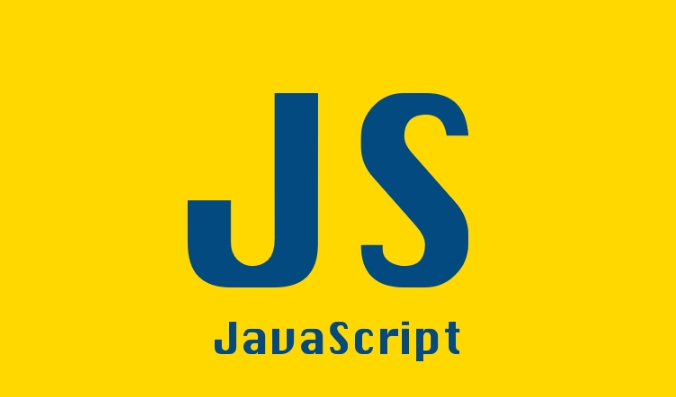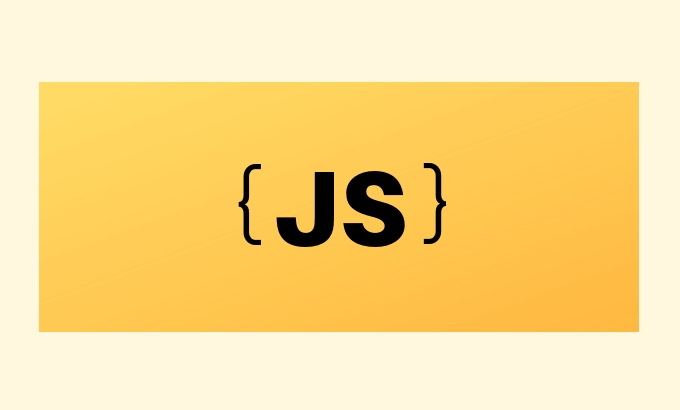JavaScript Tree Shaking for Production Build Optimization
Jul 20, 2025 am 03:37 AMTree shaking is an optimization technique based on ES Module static analysis, used to remove unused code to reduce bundle volume. It relies on the import/export syntax, improves deletion efficiency by tagging no side effects codes (such as setting sideEffects: false), and supports it by default in tools such as Webpack, Rollup, Vite, etc. Common misunderstandings include functions being referenced but not called, modules having side effects, or third-party libraries not correctly label sideEffects. The verification method can be done by observing the change in the build volume or using an analysis tool to confirm the effect.

JavaScript Tree Shaking is a very practical technology in modern front-end construction processes, especially when packaging and optimization of production environments. It helps us remove unused code in the project, thereby significantly reducing the volume of the final bundle. If you are using packaging tools like Webpack, Rollup, or Vite, tree shaking is actually serving you silently.

Let’s take a look at some common problems and operation suggestions in actual development.
What is Tree Shaking?
Tree shaking is not a specific configuration item, but an optimization strategy to remove unused exported modules by statically analyzing the ES Module structure . Its core premise is that your code must use import and export (rather than CommonJS require ) so that the packaging tool can accurately determine which code is "dead code" during the build stage and can be safely removed.

To give a simple example:
// math.js
export function add(a, b) {
return ab;
}
export function multiply(a, b) {
return a * b;
} // main.js
import { add } from './math.js';
console.log(add(2, 3)); In this case, the packaging tool will find that the multiply function is not introduced, so it will not be packaged into the final bundle file.

How to ensure Tree Shaking takes effect?
Not all writing methods can trigger tree shaking, you have to pay attention to some details:
- ? Use ES Module writing method (
import/export) - ? Avoid non-static paths in
require()or dynamic import (import()) - ? Mark code that you do not want to be packaged as side-effect-free (such as setting
"sideEffects": falseinpackage.json)
Here are a few tips:
If you add
package.json{ "sideEffects": false }This means that your module has no side effects and can make the packaging tool more secure to delete useless code.
If some files do have side effects (such as CSS introduction, polyfill, etc.), you can write this:
{ "sideEffects": ["./src/some-polyfill.js", "**/*.css"] }
Common misunderstandings and precautions
Sometimes you think the code will be shaken, but the result is not. It may be because of these reasons:
- Although the function is not called, it is referenced , such as being an object property or being passed to a higher-order function.
- The module itself has side effects , such as performing global assignments, modifying the prototype chain, etc.
- The third-party library does not correctly label sideEffects , resulting in the unused code inside it being unable to be cleared.
For example:
import { createApp } from 'vue';
createApp(App).mount('#app');If Vue does not set sideEffects correctly, or you use some plug-in injection logic, you may not be able to completely shake other code even if you use only some of the functions.
Build tool configuration suggestions
Different tools have slightly different support for tree shaking, but mainstream tools have enabled this feature by default:
- Webpack : enabled by default, but be careful that mode is set to
production - Rollup : naturally supports tree shaking, suitable for packaging library
- Vite : Based on Rollup, the code is not compressed in dev mode, and it is packaged using Rollup when building, and tree shaking is also enabled by default.
You can check whether the useless code has been successfully removed by viewing the build bundle file size changes, or using visualization tools such as Webpack Bundle Analyzer .
Basically that's it. Although Tree shaking seems to be a high-end concept, it has become a standard configuration in modern projects. As long as you write a standard ES Module and configure the packaging tool reasonably, you can easily enjoy the performance improvement it brings.
The above is the detailed content of JavaScript Tree Shaking for Production Build Optimization. For more information, please follow other related articles on the PHP Chinese website!

Hot AI Tools

Undress AI Tool
Undress images for free

Undresser.AI Undress
AI-powered app for creating realistic nude photos

AI Clothes Remover
Online AI tool for removing clothes from photos.

Clothoff.io
AI clothes remover

Video Face Swap
Swap faces in any video effortlessly with our completely free AI face swap tool!

Hot Article

Hot Tools

Notepad++7.3.1
Easy-to-use and free code editor

SublimeText3 Chinese version
Chinese version, very easy to use

Zend Studio 13.0.1
Powerful PHP integrated development environment

Dreamweaver CS6
Visual web development tools

SublimeText3 Mac version
God-level code editing software (SublimeText3)
 How to make an HTTP request in Node.js?
Jul 13, 2025 am 02:18 AM
How to make an HTTP request in Node.js?
Jul 13, 2025 am 02:18 AM
There are three common ways to initiate HTTP requests in Node.js: use built-in modules, axios, and node-fetch. 1. Use the built-in http/https module without dependencies, which is suitable for basic scenarios, but requires manual processing of data stitching and error monitoring, such as using https.get() to obtain data or send POST requests through .write(); 2.axios is a third-party library based on Promise. It has concise syntax and powerful functions, supports async/await, automatic JSON conversion, interceptor, etc. It is recommended to simplify asynchronous request operations; 3.node-fetch provides a style similar to browser fetch, based on Promise and simple syntax
 JavaScript Data Types: Primitive vs Reference
Jul 13, 2025 am 02:43 AM
JavaScript Data Types: Primitive vs Reference
Jul 13, 2025 am 02:43 AM
JavaScript data types are divided into primitive types and reference types. Primitive types include string, number, boolean, null, undefined, and symbol. The values are immutable and copies are copied when assigning values, so they do not affect each other; reference types such as objects, arrays and functions store memory addresses, and variables pointing to the same object will affect each other. Typeof and instanceof can be used to determine types, but pay attention to the historical issues of typeofnull. Understanding these two types of differences can help write more stable and reliable code.
 React vs Angular vs Vue: which js framework is best?
Jul 05, 2025 am 02:24 AM
React vs Angular vs Vue: which js framework is best?
Jul 05, 2025 am 02:24 AM
Which JavaScript framework is the best choice? The answer is to choose the most suitable one according to your needs. 1.React is flexible and free, suitable for medium and large projects that require high customization and team architecture capabilities; 2. Angular provides complete solutions, suitable for enterprise-level applications and long-term maintenance; 3. Vue is easy to use, suitable for small and medium-sized projects or rapid development. In addition, whether there is an existing technology stack, team size, project life cycle and whether SSR is needed are also important factors in choosing a framework. In short, there is no absolutely the best framework, the best choice is the one that suits your needs.
 JavaScript time object, someone builds an eactexe, faster website on Google Chrome, etc.
Jul 08, 2025 pm 02:27 PM
JavaScript time object, someone builds an eactexe, faster website on Google Chrome, etc.
Jul 08, 2025 pm 02:27 PM
Hello, JavaScript developers! Welcome to this week's JavaScript news! This week we will focus on: Oracle's trademark dispute with Deno, new JavaScript time objects are supported by browsers, Google Chrome updates, and some powerful developer tools. Let's get started! Oracle's trademark dispute with Deno Oracle's attempt to register a "JavaScript" trademark has caused controversy. Ryan Dahl, the creator of Node.js and Deno, has filed a petition to cancel the trademark, and he believes that JavaScript is an open standard and should not be used by Oracle
 Handling Promises: Chaining, Error Handling, and Promise Combinators in JavaScript
Jul 08, 2025 am 02:40 AM
Handling Promises: Chaining, Error Handling, and Promise Combinators in JavaScript
Jul 08, 2025 am 02:40 AM
Promise is the core mechanism for handling asynchronous operations in JavaScript. Understanding chain calls, error handling and combiners is the key to mastering their applications. 1. The chain call returns a new Promise through .then() to realize asynchronous process concatenation. Each .then() receives the previous result and can return a value or a Promise; 2. Error handling should use .catch() to catch exceptions to avoid silent failures, and can return the default value in catch to continue the process; 3. Combinators such as Promise.all() (successfully successful only after all success), Promise.race() (the first completion is returned) and Promise.allSettled() (waiting for all completions)
 What is the cache API and how is it used with Service Workers?
Jul 08, 2025 am 02:43 AM
What is the cache API and how is it used with Service Workers?
Jul 08, 2025 am 02:43 AM
CacheAPI is a tool provided by the browser to cache network requests, which is often used in conjunction with ServiceWorker to improve website performance and offline experience. 1. It allows developers to manually store resources such as scripts, style sheets, pictures, etc.; 2. It can match cache responses according to requests; 3. It supports deleting specific caches or clearing the entire cache; 4. It can implement cache priority or network priority strategies through ServiceWorker listening to fetch events; 5. It is often used for offline support, speed up repeated access speed, preloading key resources and background update content; 6. When using it, you need to pay attention to cache version control, storage restrictions and the difference from HTTP caching mechanism.
 Leveraging Array.prototype Methods for Data Manipulation in JavaScript
Jul 06, 2025 am 02:36 AM
Leveraging Array.prototype Methods for Data Manipulation in JavaScript
Jul 06, 2025 am 02:36 AM
JavaScript array built-in methods such as .map(), .filter() and .reduce() can simplify data processing; 1) .map() is used to convert elements one to one to generate new arrays; 2) .filter() is used to filter elements by condition; 3) .reduce() is used to aggregate data as a single value; misuse should be avoided when used, resulting in side effects or performance problems.
 JS roundup: a deep dive into the JavaScript event loop
Jul 08, 2025 am 02:24 AM
JS roundup: a deep dive into the JavaScript event loop
Jul 08, 2025 am 02:24 AM
JavaScript's event loop manages asynchronous operations by coordinating call stacks, WebAPIs, and task queues. 1. The call stack executes synchronous code, and when encountering asynchronous tasks, it is handed over to WebAPI for processing; 2. After the WebAPI completes the task in the background, it puts the callback into the corresponding queue (macro task or micro task); 3. The event loop checks whether the call stack is empty. If it is empty, the callback is taken out from the queue and pushed into the call stack for execution; 4. Micro tasks (such as Promise.then) take precedence over macro tasks (such as setTimeout); 5. Understanding the event loop helps to avoid blocking the main thread and optimize the code execution order.






